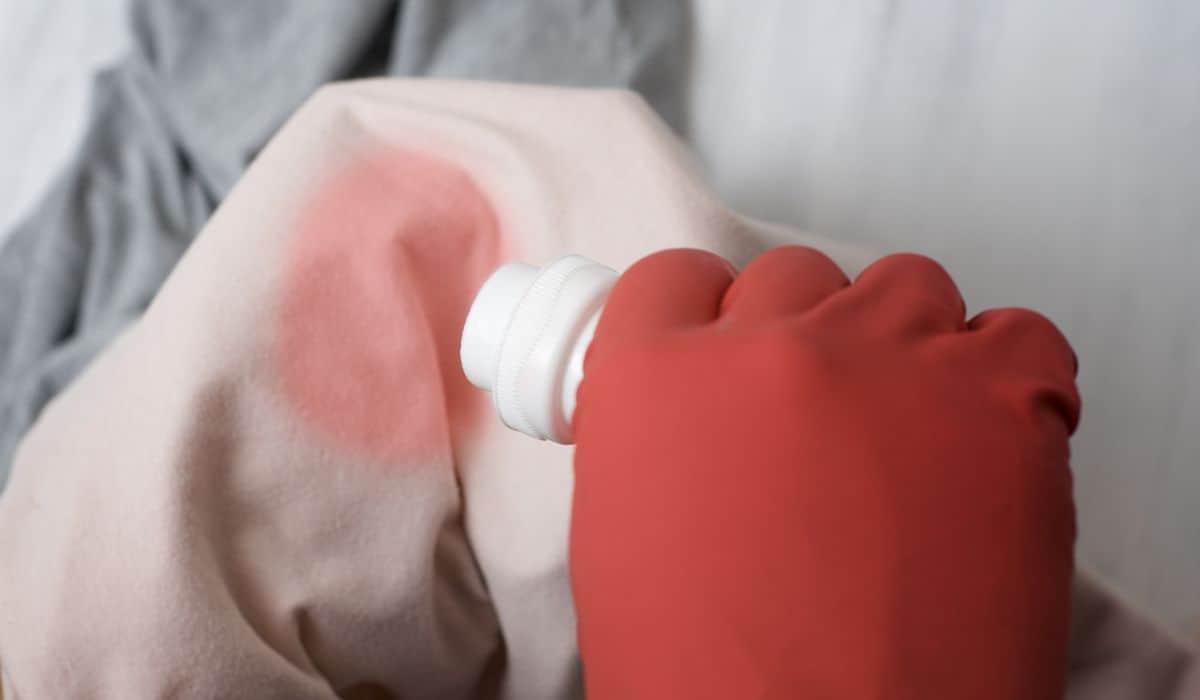Does Antifreeze Stain Clothes? (And How To Get It Out)
It’s not too uncommon to find that you accidentally spilled some antifreeze on your clothes while you were changing or topping off your essential car fluids. But will antifreeze leave a stain? And how should you remove it if it gets on your clothes?
Antifreeze can stain clothes because it contains ethylene and propylene glycol, chemicals that have a very high boiling point and react with the fabric material. If you find antifreeze on your clothes, act quickly rinse it in the sink with water, and then clean it in the laundry.
Let’s take a closer look at whether antifreeze can cause permanent stains on clothes and some of the best ways to remove it if you’ve had an unfortunate spill.
Does Antifreeze Stain Clothes?

Antifreeze can stain clothes, and some of the stains are very difficult to remove. Perhaps you’ve overfilled the coolant tank, which may eventually cause the coolant to overflow and mess up your clothes.
Your clothes may also get antifreeze on them when you’re changing the coolant, or refilling it without wearing a safety apron (on Amazon).
Whatever the case, the coolant fluid may form stains when it comes into contact with your clothes. These stains are a result of the chemical composition of an antifreeze that reacts with the cloth fabric and can cause wear and tear on the fabric.
These stains become even more visible as a result of dye, which is a primary component of almost all antifreeze. Some of the most common coolant colors are pink, green, and red. Different automakers recommend different colors, and some stains are more difficult to remove.
Since antifreeze can stain your clothes pretty badly — and since the chemicals in antifreeze can be hazardous — you should act fast.
Is It Possible to Get an Antifreeze Stain Out of Clothes?

Luckily, it’s possible to get unwanted antifreeze stains out of your clothes, car seats, or other fabrics—as most coolants don’t dry up quickly. Unlike other chemicals and liquids, antifreeze doesn’t evaporate easily, which gives you enough time to remove it.
Antifreeze is also a soluble substance, so you can often remove it by using tap water mixed with a stain remover solvent.
You need to be very careful with choosing a non-abrasive and non-toxic stain remover solvent, which should not contain chemicals that may react with antifreeze components such as ethylene glycol (EG), methanol, or propylene glycol (PG). Such a reaction may damage the fabric of the clothing.
If you don’t remove the stains before they dry up, the ethylene glycol, propylene glycol, and methanol in antifreeze can cause skin and respiratory problems.
How to Remove an Antifreeze Stain
If you find coolant liquid on your clothes, you’ll have to act fast; after all, you don’t want the stains to become permanent. You’ll also have to apply a non-toxic, non-abrasive solvent before rinsing the clothes.
If you don’t do it correctly, you’ll probably damage the fabric of your clothes.
Here’s how you can go through the process correctly to remove the coolant stains without damaging your clothes:
Act Fast to Remove the Stains Easily
If you wait too long, the antifreeze on your clothes will sit in the fabric of the clothes, becoming hard stains. In this situation, it’ll become more difficult for you to get rid of them.
Medical experts also say that dried EG and PG can be extremely harmful to your health if you inhale the smell.
So, acting fast is the way to go. Remember, however, that this strategy doesn’t mean that you should rush and be too aggressive with the stains; doing so will only damage your clothes.
Follow these guidelines to clean it properly:
- Fill an empty bowl with tap water. You can also use hot water if your clothes can withstand the heat.
- Put the cleaning solvent into the water and stir until it is properly mixed. Some of the most effective solvents include laundry soap, regular dishwashing detergent, and bleach. Make sure that the detergent is non-abrasive and non-toxic to prevent your clothes from tearing.
Now that the solvent is ready, it’s time to move to the next step of rinsing and rubbing the clothes.
Rinse & Rub
The next step is to rinse and rub your clothes. Here’s how to do it properly:
- Begin by soaking the affected area in the cleaning water mix, and let it sit for about 30 minutes. During this time, the solvent will be absorbed into the pores of the cloth fabric. It’ll break up the coolant oil, dye pigments, and other chemicals, and they’ll lose their grip on the cloth fabric.
- Next, gently rub the affected area. Don’t go too hard, as it may damage your clothes.
- Once the coolant is gone, rinse tap water over the affected area to clean it.
- Air dry your clothes because dryer heat may damage the fabric or cause any remaining stains to become more permanent.
Tips for Removing Antifreeze Stains From Clothes
Antifreeze is easy to clean (unlike grease- which we’ve covered here), but not if it dries up. Here are some tips to help remove antifreeze stains from your clothes:
- Act quickly when you get coolant stains on your clothes.
- If the stains are fresh, you can easily apply a quick wash with cold water to wash them away.
- Don’t dry the clothes before the stains are completely gone, as the heat may cause the stains to further settle in.
- You can use sand or baking soda to absorb any excess liquid on antifreeze stains. This method works when the cloth is soaked in antifreeze.
